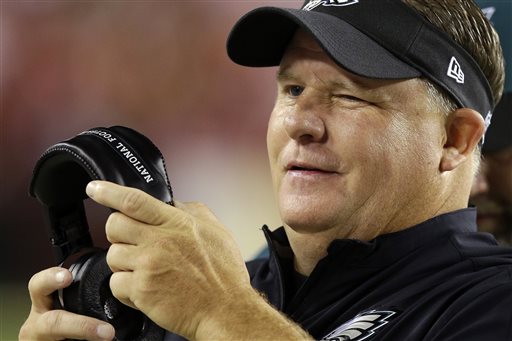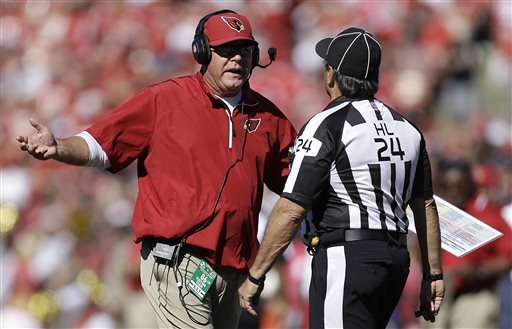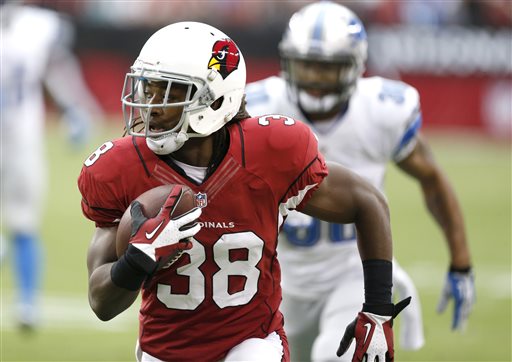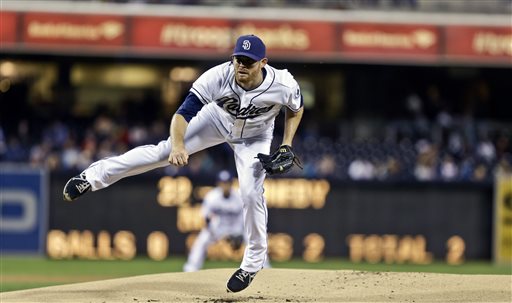Chip Kelly’s offense: Fad or future?
Sep 11, 2013, 3:46 PM | Updated: 3:46 pm

The Philadelphia Eagles are officially the talk of the NFL.
Monday night, fans tuned in for the mystery of whether Chip Kelly’s meth-paced Oregon Duck college offense would fly in the NFL. And after one game, even the skeptics have to be impressed. The offense was fun, fast, and (most importantly) effective. Michael Vick looked reborn. And LeSean McCoy and DeSean Jackson acted like little kids at a birthday party the year cake was invented.
But one game does not a season make, nor a legacy.
Sports doesn’t work like pop culture, where a no-talent idiot in pig tails can embarrass herself on television and turn “twerking” into a national phenomenon. No, in sports, you have to prove yourself over time.
There have been plenty of fads that have come and gone in sports, plenty of passing novelties that were once labeled the “future of the game.” And then, there have been some truly revolutionary breakthroughs that stuck.
So where does Chip Kelly’s offense fall. Fad or Future?
Let me begin by stating, I do believe that Kelly’s revelation of snapping the ball every 14 seconds is here to stay. New England and Denver both adopted the concept of “fast-break football” before needing to see the results from Kelly’s Eagles. Of course, Brady and Manning weren’t operating this fast.
However, as much as I loved what I was watching last night, I do believe Kelly’s offense is going to be an NFL FAD.
#1: The quarterback is made too vulnerable. Michael Vick made it through the game without serious injury, but he took another beating. And as opposing defenses gameplan, they are going to target Vick for abuse on every read-option fake.
#2: I think the offense only works when it’s going full-tilt. Last night the Eagles built a 26-point lead and then had to hold on for dear life in the second half. Remember the “Run and shoot?” Same thing happened to it. The system was excellent at building a lead, but terrible at holding onto one. There was no way to operate the “Run and shoot” at half or three-quarter speed. And there was no effective way to eat clock with it.
Kelly should learn from history, even at the expense of angering opponents. You don’t stop lighting up the scoreboard until you’re up 50. Burning clock screws with the timing of your offense. And changing to ground-and-pound takes you too far from the identity of your offense and your roster, leaving you prone to three-and-outs.
But what do I know?
History shows that plenty of coaches and general managers have given in to the latest fad.
– The Twin Towers – For years, the big man was the dominant force in the NBA. Mikan, Russell, Chamberlain, Abdul-Jabbar — get a great big man and you’ll win a championship. In 1983, the Houston Rockets tanked games to land the next great big man, Ralph Sampson. The next year, Houston had the top pick again. And even with Michael Jordan on the board, the Rockets went with the theory, “if an unstoppable big man gives you a championship edge, what might two unstoppable big men do?” The Rockets became a first place team within the year, and executives across the NBA fell in love with the “Twin Towers” concept. In the 1985 NBA Draft, eight centers were taken with the first 17 picks, including Patrick Ewing whom the Knicks teamed with their existing big man Bill Cartwright. Neither Sampson & Olajuwon nor Ewing & Cartwright won an NBA title. Of course, Duncan & Robinson did.
– The Next LT – Lawrence Taylor changed the game. It’s the highest compliment a player can receive. Michael Jordan, Wayne Gretzky and Babe Ruth each altered the present and the future of their respective sports. The problem with transcendent players is that there is always an executive or twelve who doesn’t realize that some players are simply once-in-a-generation talents, so they try to create one using similar parts. For years, NFL teams tried drafting the next Lawrence Taylor. Taylor was drafted in 1981. The next seven years, seven outside linebackers were taken with a top-ten pick. The previous seven years? No outside linebacker was taken with a top-ten pick. Finally, in 1988, and at the height of LT’s effectiveness, the Atlanta Falcons drafted Auburn’s Aundray Bruce with the top overall selection. The latest “next LT” started just 42 games over the course of an 11-year career. At last, teams realized Taylor couldn’t be duplicated.
I could go on about the failed fads, but I won’t. Feel free to discuss it amongst yourselves though.
And, of course, it’s only fair that I point out a few of the “fads” that did prove to be the future…
– The 5-man rotation in baseball
– The Fosbury Flop
– The West Coast Offense
– Hot dogs at the ballpark
– Dunking the basketball
– The shot clock
Thank God for innovation. Thank God for change. Thank God for Chip Kelly.
I hope the system does work in Philadelphia. I hope defenses don’t figure it out.
But if it proves to be merely a fad, it was still far more enjoyable than the Macarena or the mullet.







